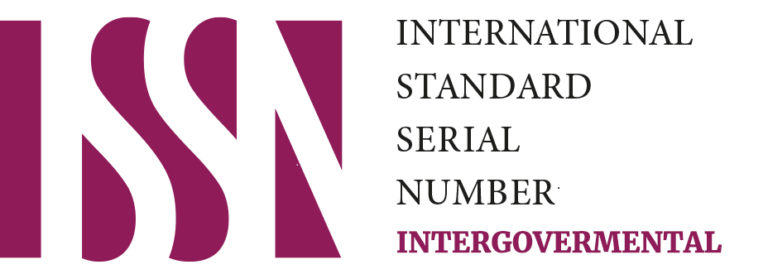ABSTRACT
Conflict resolution experts worldwide have wrestled with whether mediation is an alternative form of dispute resolution or the frontrunner. This dissertation negates the notion that mediation is an alternate form of dispute resolution and establishes that litigation is the alternative.
For many years, litigation has been the preferred choice to resolve conflicts. The masses relied on judges and arbitrators to resolve their ongoing conflicts. Alternative Dispute Resolution (ADR) existed long before litigation was even considered, although not necessarily under this nomenclature.
Elders and other respected community members assisted their communities in conflict using mediation, counselling, fact-finding, conflict coaching, restorative justice, justice circles, collaboration, conciliation, arbitration and more, to resolve conflicts rather than ask an “outsider” to determine who is right and who is wrong. More recently, with the advent of formalizing the mediation process within the courts, controversy has arisen about how to utilize mediation without abandoning its very principles, including voluntarism.
This dissertation will establish that the mandatory versus voluntary debate need not be a black and white issue. There is a middle ground that meets both practitioner’s and the public’s needs and interests while focusing on legislative changes across Europe and, in particular, Spain.
Based on a literature review, this dissertation will also examine the evolution of mediation in Spain. Spain is being used in this example due to its significant delays in implementing mediation and the reasons behind the delays. In fact, Spain did not initially implement the EU Mediation Directive and required a Royal Decree to meet its legislative requirements.
INTRODUCTION
Across the globe, ADR has become widely recognized as a conflict resolution method that can replace litigation in many instances. Historically, societies have relied on the Courts and litigation to resolve their conflicts. ADR is making a comeback, and parties in conflict, with their lawyers, recognize the benefits of collaboration, conciliation, arbitration, and mediation as alternatives to battling in court for years and at a hefty price in an attempt to win, at all costs.1
The most recognized forms of ADR are mediation and arbitration, yet, other alternatives to litigation such as conciliation, Ombuds, fact-finding and judicial settlement conferences are also considered to fall under the umbrella of ADR.
This dissertation will address the use of mediation and focus on the legislative changes to mediation that have been enacted or are being implemented in European states.
There has been a recent trend to implement Court Annexed Mediation schemes, making mediation mandatory before the courts can hear it. This dissertation will consider these legislative changes and address their impact on the principles of mediation. Consideration will also be given to the use (and lack of use) of mediation throughout the courts when mediation is voluntary, judge ordered, or when the courts utilize a mandatory information session.
This dissertation will examine the evolution of mediation in Spain. Spain is referenced in this dissertation due to its significant delays in implementing mediation and the reasons behind the delays. In fact, Spain did not implement the EU Mediation Directive and required a Royal Decree to meet its legislative requirements.
Also outlined in this dissertation are various attempts throughout Europe and elsewhere to revamp their court systems through streamlining the court processes to provide greater justice to its citizens, reduce the court backlogs and reduce the costs associated with conflict resolution.
MEDIATION’S HISTORICAL ROOTS
“When we listen, people speak”
(Brown, K)
To consider the present, one must reflect on the past regarding the historical aspects and interventions before the dawning of mediation in Spain.
We can go back to the beginning of the 20th century (and earlier) to consider how mediation played a role in the governments, laws, and resolution of conflicts even though the term ‘mediation’ had not yet been conceived. From almost the beginning of time, forms of mediation have been used worldwide to assist in resolving interpersonal conflicts. As far back as the Bible, Koran, other world religious doctrines, or ancient tribal customs, we will find mention of third-party interventions. Many cultures preach that listening is of far greater importance than speaking (one of the key elements of mediation is having the ability to listen to the other party).
In most of these historical cases, the ‘mediator’ was a revered community member, an Elder in Native American or First Nations (Canada) cultures. This individual held the community’s respect and was a ‘subject matter expert’ in the customs and traditions of the community. This Elder was known by many different names depending on the culture; Shaman, Sabio or Sage (all referring to good/wise men or women), who all held authority and were sought after by community members when a third party was required to help in the resolution of conflicts.
Moving further into the 20th century, ‘mediation’ was introduced more formally in the early 1900s in the USA when labour and management experienced severe conflicts, and strikes were disruptive.
In the 1920s, Jewish immigrants established a Jewish Conciliation Board in New York to mediate their conflicts in their new land (this court remains even today). In the 1960s, some of the most prolific literature was published on mediation. In the 80s, Fisher and Ury wrote Getting to Yes, which is still considered the textbook for interest-based mediation.
In the USA and then Canada, separating and divorcing couples began to utilize mediation as an alternate form of conflict resolution in the courts. This movement is said to be the impetus for where mediation is today internationally.
The concept of ‘mediation’ entered Europe in the latter part of the 1970s. England, Belgium, France, and Austria were the frontrunners in introducing mediation into their societies and implemented judicial changes to enshrine mediation in their courts. In the early 80s, Spanish judges, lawyers, psychologists, social workers, and academics began debating the possibilities of mediation in family-related issues, namely for separating and divorcing couples.
An essential step in Spain’s judicial history occurred in 1981 with their Law 30/1981 in which part of their Civil Code relating to marriage breakdowns was modified. This modification, while not explicitly regulating mediation, offered the possibility of using mediation as an alternative to litigation.
In the mid-90s, mediation was formally recognized through the courts in Europe. Spain followed by way of regulations in 2001 initially in Catalonia, Galicia, and Valencia, followed by other autonomous communities (regions) in 2005. The Spanish Law 15/2005 was the first law where the wording included “mediation,” granting authority for a judge to hold a divorce case in abeyance (suspension of the case) while awaiting the results of a mediation process. In May 2012, by way of the Royal Decree, Spain created a national law regarding mediation. (Many Acts and regulations preceded the current law).2
When one views Spain’s history concerning modern-day mediation, one will catch a glimpse of the birth of family mediation and how mediation has now expanded into other fields where deeply rooted conflicts exist. However, before we do this, it is incumbent upon us to consider how Spain’s judicial system evolved to where it is today. Litigation, in its various forms, has been in place in Spain for a very long time. Courts have historically been used to resolve conflicts with lawyers and litigants.
This has been the norm, and veering from this pattern has not, to say the least, been an easy process in Spain. Tradition dictated that conflicts, whether commercial, civil, family, or other, were to be resolved within the judicial system, namely the courts.
The resolution of deeply rooted conflicts outside of the courts was mostly unheard of. Even with the implementation of arbitration to achieve resolution, there remained considerable opposition, and years passed, waiting for the mainstreaming of arbitration (let alone mediation) in Spain.
Due, primarily to the use of the courts as the primary method of conflict resolution, the inevitable occurred, a significant and extreme backlog of cases (civil and commercial) remain before the Spanish courts (as of the writing of this chapter, there are currently more than 9,000,000 cases sitting in the Spanish courts awaiting resolution).3
Over the past decade, arbitration has become more and more ‘in fashion’ as a method for resolving conflicts in Spain, mainly due to the parties having tired of waiting long periods for cases to be heard. The Spanish Arbitration Act 60/2003 was approved on December 23, 2003, and entered into force on March 24, 2004.4
This new Act substituted previous arbitration Acts intending to regulate the ADR component or ‘scheme’ as it was referred to at the time, focusing on domestic and cross-border conflicts, which were substantially increasing.
Often companies were required to wait years until their claims reached the court dockets. Unfortunately, many companies went out of business before the cases were heard, leaving the litigants with little recourse.
Working alongside arbitration was conciliation and mediation; however, neither of these options gained the same respect or success as arbitration with the Spanish public.
Mediation, albeit known by other names, superseded litigation and litigation, initially became the alternative. Litigation became embedded in Spain and most other countries, so much so that its communities considered litigation to be the preferred method of resolving conflicts.
Society has become so accustomed to resolving their conflicts through litigation that they have forgotten their roots. Changes are occurring and are becoming widespread. These changes are impacting the way the world looks at conflict resolution. The courts have their purpose, yet, society is beginning to awaken to the reality that justice can be served in many ways.
MOVING FROM THE SHADOWS INTO THE SPOTLIGHT
To a large extent, mediation across the globe has become mainstream, yet it remains in the shadows and under-utilized in Spain5. This dissertation considers the reasons for the current state of mediation in Spain and compares mediation schemes enacted in other regions. While it is tempting, it would not be prudent to focus on blame/cause regarding the lack of mediation in Spain’s history, cultures, and political unwillingness to embrace mediation. While these issues have a role, there have been other factors at play as well. It will be established that the initial reasons for rejecting mediation were based on flawed logic. That logic misinterpreted the very constructs of mediation, presuming mediation to be an alternative to justice, wherein mediation is an authentic instrument in achieving justice.
The delays created from these misconstrued beliefs thwarted the evolution of mediation in Spain and across Europe. This dissertation will focus on the history and challenges experienced regarding the implementation of mediation to determine if mediation can become mainstream in Spain without abandoning the basic principles and tenets of the profession.
Spain is currently undergoing growth in its legal arenas, and alternatives are being considered. However, Spain’s history of getting to the start line late continues to plague its 21st-century attempts to modernize its judicial system. Even though Spain’s debates are moving at a snail’s pace, there is hope that the Spanish legislature, in cooperation with mediation associations, will come to terms with the possibilities that mediation offers.
THE OPT-OUT ALTERNATIVE
“Mandatory mediation” is an option that has been considered by many European and American countries (among others) wherein the clients and their lawyers present themselves before a mediator for an information session and then decide if they are willing to attempt mediation. The lawyers are required to sign any minutes and the Agreement to Mediate (along with their clients). This signing by the lawyers, in effect, renders the agreement enforceable under law. It is the lawyer’s responsibility to ensure that any agreement conforms with the mandatory rules and regulations.6
In Italy, for example, mandatory mediation laws introduced what was considered a novelty. The parties and their lawyers were required to attend an initial preliminary session with a mediator. This session is an information session only and not considered to be a mediation. The session must take place within 30 days, and the parties are required to attempt mediation or opt-out and continue to litigation. Regardless of their decision, their obligation is deemed to have been met.
In situations where a party does not attend the initial information session, the judge has the authority, based on the evidence presented, to assess a fine against the absent party equal to the filing fee.
The parties are afforded three months to complete the mediation process.
On two separate occasions, Italy has introduced laws and implemented a program some refer to as mandatory mediation. Yet, it is not mandatory and does not dismiss that fundamental principle of the mediation profession …Voluntarism …The parties remain in control and can leave the mediation at any time, even before it begins, should they not want to proceed with mediation after the initial mandatory meeting with a court-approved mediator.
As a result, three doors have opened for court cases (Opt-in/voluntary, court-ordered and opt-out/mandatory mediations). The entirely voluntary doorway gets little use. Even in the 21st century, the vast majority of people are not voluntarily opting into mediation. The opt-in option has not proven successful (less than 1% across Europe).7
For their own reasons, judges rejected the idea of ordering the parties and their lawyers to mediation, thus resulting in even less use of this second option. In Italy, judges are being trained in mediation, so the expectation is that they will soon refer more parties to mediation.
This leaves us with the third option, opt-out mediation, being considered in many countries.
In October 2018, IL SOLE 24 ORE, a respected Italian newspaper, noted that since the opt-out model was put in place, litigated cases have decreased 30-50% depending on the type of case, and mediated cases have increased substantially. Other countries have also experienced significant increases in court-related mediations and a substantial drop in litigated cases.
CONCLUSION
The dawning of mediation has occurred in Spain and is growing, particularly in family/divorce, labour, and civil and commercial fields. The movement has evolved more rapidly in the past few decades. This writer believes that we will witness further ADR and ODR expansion into the workplace, cross-border, consumer, and community fields. In the upcoming decades, ODR will play a pivotal role in both cross-border and in the workplace and consumer mediation, noting the considerable distances between consumers and businesses with online transactions. The internet continues to proliferate, as does the need for conflict resolution.
With the global economy and more organizations operating on an international basis, we will see a rise in the need for and use of ODR platforms that will aid in bringing international parties together to resolve their conflicts, whether these conflicts be between Spanish co-workers, Asian consumers, Canadian businesses, International corporations or other parties in remote locations. These new platforms allow for parties to meet synchronously and asynchronously to resolve conflicts at a meagre cost. Spanish organizations and individuals will also be afforded these opportunities, and I look forward to the day when both ADR and ODR are commonplace in Spain.
The courts in Europe are considering the use of ODR in order to resolve conflicts that would typically require in-person meetings. ADR has been using ODR for some time now, and protocols have been established. Italy and Greece have implemented ODR due to the COVID-19 pandemic, and other courts are considering this opportunity. The initial joint mediation sessions can efficiently be conducted online. Since mediation sessions are currently conducted online globally, opportunities for incorporating ODR into the opt-out scheme are enormous.
The Italian, Turkish, Greek and others’ experiences confirm that:
(i) mediation is a useful tool in resolving disputes,
(ii) getting parties into mediation is the tricky part; and
(iii) The current opt-out schemes do not, in many mediators’ opinions, contradict the principle of voluntariness, as the only mandatory component is the initial meeting/intake session, and parties maintain their self-determination to stay in mediation and to determine a resolution or not.
The statistics clearly show a significant reduction in court cases due to the opt-out mediation scheme.8
The United Nations are following suit with Italy, Turkey, and Greece by considering an opt-out scheme.
While the new mediation laws across the globe are changing the legal landscape, Greece, in particular, has taken a brave step forward by firstly emulating Italy’s ground-breaking legal changes, and secondly, by moving towards the institutionalizing of mediation into its civil and commercial procedural systems. Mediation has moved from the shadows of an alternative scheme into the mainstream by being a part of the Greek regulatory system. The mandatory first joint session in Greece is regarded as an initial step leading to greater use of mediation and eventually to mediation becoming fully entrenched into their legal system as a complementary dispute resolution option instead of alternative dispute resolution.9
Time will tell if Spain also follows in this direction.
CONFLICT OF INTEREST
The author declares no conflict of interest.
ACKNOWLEDGEMENT
I want to acknowledge that this dissertation is in debt to Professor Laurent Cleenewerck for his great wisdom and support throughout the process.
I would also like to acknowledge Dr. Kabiru Gulma for his guidance and technical expertise in the final days of completing this doctorate.
REFERENCES
[1] Giovanni Matteucci, “MANDATORY MEDIATION, THE ITALIAN EXPERIENCE,” Revista Eletrônica de Direito Processual 16, no. 16 (December 4, 2015), https://doi.org/10.12957/redp.2015.1964. [2] Anna Vall Rius, “Mediation: Roots in the Past with Projection in the Future,” no. 1 (2009): 10. [3] Anna Vall Rius, “Mediation: Roots in the Past with Projection in the Future,” no. 1 (2009): 10. [4] Ley Foral, “COMUNIDAD FORAL DE NAVARRA,” 2012, 16. [5] Carolina Macho Gómez, “Los ADR «alternative dispute resolution» en el comercio internacional,” Cuadernos de Derecho Transnacional 5 (2013): 30.[6] “European Lawyers Day – CCBE,” accessed January 18, 2021, https://www.ccbe.eu/actions/european-lawyers-day/. [7] Giuseppe De Palo, “A Ten-Year-Long ‘EU Mediation Paradox’ – When an EU Directive Needs To Be More …Directive,” n.d., 12. [8] “Conflict Resolution Network — Skills, Strategies & Techniques,” Conflict Resolution Network, accessed January 18, 2021, https://www.crnhq.org/. [9] “International Mediation Institute,” International Mediation Institute, accessed January 18, 2021, https://imimediation.org/en/.
Publisher Information: The Intergovernmental Research and Policy Journal (IRPJ) is a unique interdisciplinary peer-reviewed and open access Journal. It operates under the authority of the only global and treaty-based intergovernmental university in the world (EUCLID), with other intergovernmental organizations in mind. Currently, there are more than 17,000 universities globally, but less than 15 are multilateral institutions, EUCLID, as IRPJ’s sponsor, is the only global and multi-disciplinary UN-registered treaty-based institution.
IRPJ authors can be assured that their research will be widely visible on account of the trusted Internet visibility of its “.int” domain which virtually guarantees first page results on matching keywords (.int domains are only assigned by IANA to vetted treaty-based organizations and are recognized as trusted authorities by search engines). In addition to its “.int” domain, IRPJ is published under an approved ISSN for intergovernmental organizations (“international publisher”) status (also used by United Nations, World Bank, European Space Agency, etc.).
IRPJ offers:
- United Nations Treaty reference on your published article (PDF).
- “Efficiency” driven and “author-focused” workflow
- Operates the very novel author-centric metric of “Journal Efficiency Factor”
- Minimal processing fee with the possibility of waiver
- Dedicated editors to work with graduate and doctoral students
- Continuous publication i.e., publication of articles immediately upon acceptance
- The expected time frame from submission to publication is up to 40 calendar days
- Broad thematic categories
- Every published article will receive a DOI from Crossref and is archived by CLOCKSS.






